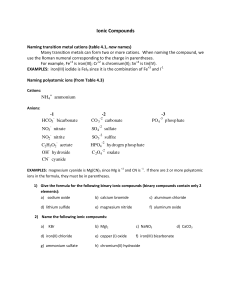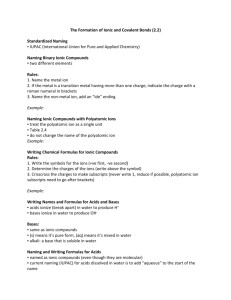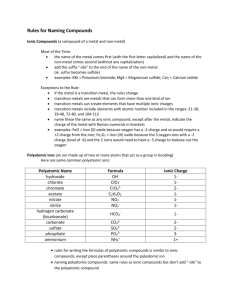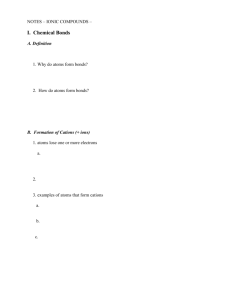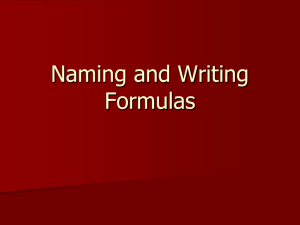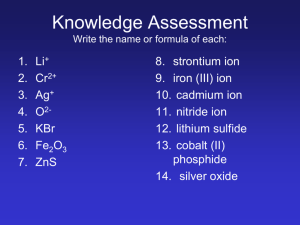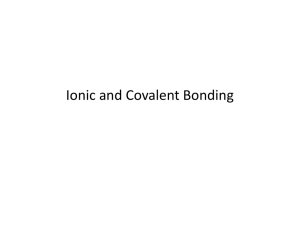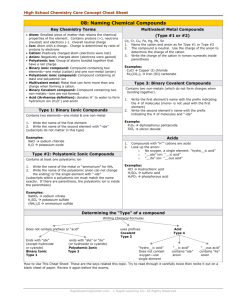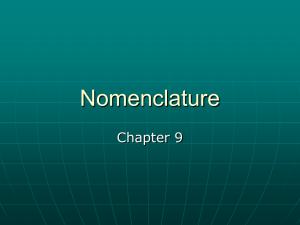Formula Writing Reading
advertisement
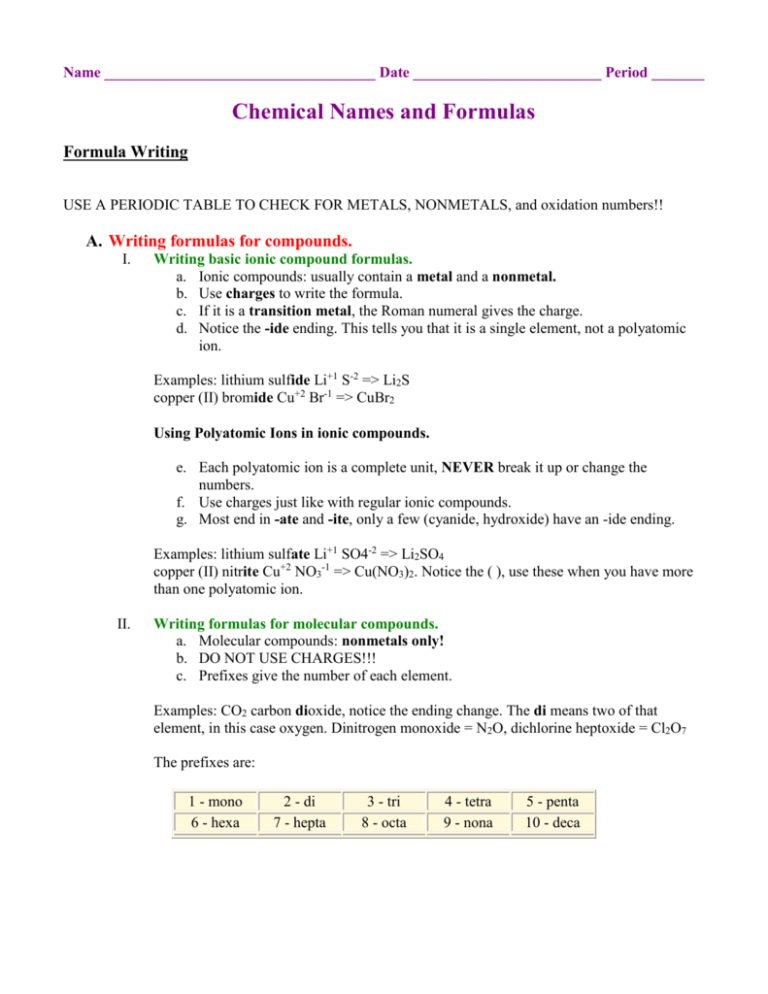
Name ____________________________________ Date _________________________ Period _______ Chemical Names and Formulas Formula Writing USE A PERIODIC TABLE TO CHECK FOR METALS, NONMETALS, and oxidation numbers!! A. Writing formulas for compounds. I. Writing basic ionic compound formulas. a. Ionic compounds: usually contain a metal and a nonmetal. b. Use charges to write the formula. c. If it is a transition metal, the Roman numeral gives the charge. d. Notice the -ide ending. This tells you that it is a single element, not a polyatomic ion. Examples: lithium sulfide Li+1 S-2 => Li2S copper (II) bromide Cu+2 Br-1 => CuBr2 Using Polyatomic Ions in ionic compounds. e. Each polyatomic ion is a complete unit, NEVER break it up or change the numbers. f. Use charges just like with regular ionic compounds. g. Most end in -ate and -ite, only a few (cyanide, hydroxide) have an -ide ending. Examples: lithium sulfate Li+1 SO4-2 => Li2SO4 copper (II) nitrite Cu+2 NO3-1 => Cu(NO3)2. Notice the ( ), use these when you have more than one polyatomic ion. II. Writing formulas for molecular compounds. a. Molecular compounds: nonmetals only! b. DO NOT USE CHARGES!!! c. Prefixes give the number of each element. Examples: CO2 carbon dioxide, notice the ending change. The di means two of that element, in this case oxygen. Dinitrogen monoxide = N2O, dichlorine heptoxide = Cl2O7 The prefixes are: 1 - mono 6 - hexa 2 - di 7 - hepta 3 - tri 8 - octa 4 - tetra 9 - nona 5 - penta 10 - deca B. Writing names for compounds. a. CHECK IF IT IS IONIC OR MOLECULAR!! b. If it is molecular, see II above. c. If it is ionic, name the first element, then name the second ion. If it is a single element, then just change the ending to an -ide. If it is more than one element, it is a polyatomic ion (one you have memorized)!! Use the name you memorized. d. Check if the metal is a transition metal. If it is, you need a Roman numeral. When writing the names for these compounds you need to figure the charge by working backwards. 1. Example: FeCl2 would be iron chloride, until you noticed that iron is a transition metal. To figure the charge, first find the charge of the negative ion (chloride). It is Cl-1. Since there are 2 of these chlorides given in the formula FeCl2, the total negative charge is -2. Therefore the iron must be a +2 to offset it. The final name is iron (II) chloride. 2. Example: PtO2, O has a -2 charge, there are two of them, so the total negative charge is -4. Therefore platinum (Pt) must be +4. The final name is platinum (IV) oxide. 3. Example: Fe2O3, O has a -2 charge, there are three of them, so the total negative charge is -6. The total positive charge must be +6, since there are 2 irons (Fe), then each Fe must have a charge of +3. The final name is iron (III) oxide.

